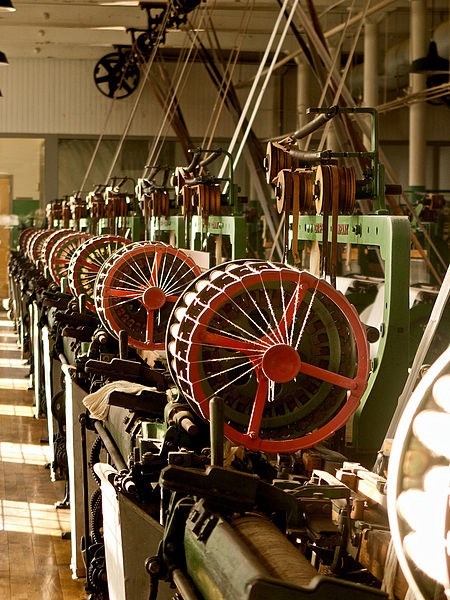Last updated: June 15, 2018
Article
Lowell, Story of an Industrial City: Power Looms

Photo by Jlpapple (CC BY 3.0; https://commons.wikimedia.org/wiki/File:Boott_cotton_mill_looms.jpg)
Successful power looms were in operation in England by the early 1800s, but those made in America were inadequate. Francis Cabot Lowell realized that for the United States to develop a practical power loom, it would have to borrow British technology. While visiting English textile mills, he memorized the workings of their power looms. Upon his return, he recruited master mechanic Paul Moody to help him recreate and develop what he had seen. They succeeded in adapting the British design, and the machine shop established at the Waltham mills by Lowell and Moody continued to make improvements in the loom. With the introduction of a dependable power loom, weaving could keep up with spinning, and the American textile industry was underway.
---
From: Dublin, Thomas. 1992. Lowell: the story of an industrial city: a guide to Lowell National Historical Park and Lowell Heritage State Park, Lowell, Massachusetts. Washington, D.C.: Division of Publications, National Park Service, U.S. Department of the Interior.
